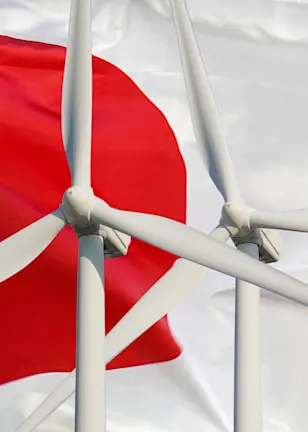Multiple expansion has driven equity returns
During the past bull market, equity markets have become increasingly expensive, as measured by the cyclically adjusted price earnings (CAPE) ratio. In June 2024, the US CAPE stood at 34, more than two standard deviations above the historical average of 18. This current value places it in the 96th percentile since 1900. The graph below (Figure 1) illustrates the historical CAPE ratio and includes three potential scenarios for where it might be in five years: 40, 30, and 20.
Figure 1 - US CAPE: 1900-2030

Source: Robert Shiller2 and Robeco.
Quantifying the impact of multiple expansion
We can quantify the extent to which past equity returns have been driven by multiple expansion by regressing one-year equity returns on changes in the CAPE ratio. This analysis includes data from 2009 onward and a US sample dating back to 1929 as a robustness check.
Since the CAPE ratio bottomed in March 2009, the MSCI World index has increased by 13.2% annually (EUR). Over the past 15 years the CAPE index has gone up from 13 to 34, an increase of more than 20 points. This multiple expansion has been a large driver of the recent great bull market.
Notably, if we regress one-year equity returns on one-year changes in the CAPE ratio from March 2009 to March 2024, we effectively correct for multiple expansions and reveal the following empirical relationship:
Equity market return = 8.5% + 𝚫 CAPE * 2.7%
This means that the MSCI World returns would have been 8.5%, controlling for changes in the CAPE ratio, which aligns with the long-term average.3 During this prolonged period of multiple expansion, defensive stocks—as measured by Robeco Global Conservative Equities strategy—went up by 12.2% (EUR) trailing the broad market by 1% per year.4 Defensive stock returns tend to be less dependent on market sentiment and multiple expansion. This is confirmed by carrying out the following regression, showing a lower dependency of defensive returns on changes in the CAPE ratio.
Defensive equity return = 9.2% + 𝚫 CAPE * 1.2%
This indicates that defensive equity returns would have been 9.2% over this 15-year period, controlling for changes in CAPE ratio; thus demonstrating the lowered sensitivity to CAPE (1.2% versus the market’s 2.7%). To further highlight the difference between defensive equities and market returns, we plot this relative return against changes in CAPE.
Figure 2 - Relative perfomance defensive and 𝚫 CAPE

Source: Robeco. Sample: 2009–2024. Vertical axis: 1-year relative returns (Robeco Conservative - MSCI World). Horizontal axis: 1-year change in CAPE.
If the market CAPE is up, defensive stocks tend to lag the market, and vice versa. Thus, with the CAPE up by 10 points in a year, defensive equities underperformed the broader market by 12%. Conversely, when the market CAPE went down by 10 points, defensive stocks outperformed the market by 15%.5 As a further robustness check, when we use the Conservative Formula and extend this analysis using US data going back all the way to 1929, we find similar and even slightly stronger results.
Active Quant: finding alpha with confidence
Blending data-driven insights, risk control and quant expertise to pursue reliable returns.
Cape of good hope
Using this empirical framework, we can explore three possible future scenarios for market valuation five years from now, starting from both the current and a lower, hypothetical CAPE ratio. These scenarios are based on three future CAPE values, assuming all other factors remain constant.
Table 1 – Five-year return forecasts

Source: Robeco. Five-year return forecasts are based on regression 1 and 2. Estimation period 2009-2024.
First, it shows that a lower starting CAPE level would hypothetically significantly impact returns. If the current CAPE were at the long-term average of 18 rather than the current value of 34, then five-year equity returns would be in the double-digits, similar to what we have witnessed over the past years. However, starting from current CAPE levels, the scenarios are such:
CAPE ratio at 20: In this ‘back to normal’ scenario, we see equity returns of around 1%, driven by multiple contraction, or not even keeping up with inflation. This would be a worst-case scenario but defensive equities would hold up well, with returns between 5% and 6%.
CAPE ratio at 30: In a 'higher for longer' scenario, equity returns would be a moderate 6% since multiple expansion would not be a tailwind. Defensive equities would perform better, with an 8% return.
CAPE ratio at 40: If the CAPE ratio increases further, reaching ‘exuberance’ again, equity returns would exceed 10%, similar to the past 15 years. Defensive equities would also perform well, slightly lagging the market.
As the current CAPE level is the most relevant, in Figure 3 below we summarize five-year outlook for each of our three CAPE scenarios using today’s CAPE level:
Figure 3 –Three CAPE scenarios: 2025-2029

Source: Table 1, start CAPE 34.
Implications for other strategies
What does this research insight suggest for the performance of other factor-based strategies? Are they also sensitive to CAPE changes? Further tests using the same sample period show that Robeco Enhanced Indexing strategies consistently outperform across different CAPE scenarios. This consistency in relative performance is also observed in Robeco’s active and multi-factor strategies. Additionally, a leveraged version of Conservative Equities, which takes 140% stock positions and has a beta of one, delivers consistent outperformance across the three CAPE regimes, including the exuberance scenario. For these 'beta one' strategies, absolute performance varies with future CAPE levels, while relative performance remains stable. These benchmark-aware strategies consistently deliver positive relative performance throughout the market cycle, whereas defensive equities deliver more consistent absolute performance throughout the cycle, both as intended.
Conclusion
The CAPE ratio significantly influences equity returns, with higher ratios leading to lower expected returns. While multiple expansion has driven substantial market gains in recent years, we ask: what happens if history does rhyme? Defensive equities, with their lower sensitivity to CAPE changes, offer a more stable alternative in most scenarios, especially those in which the market CAPE level goes back to normal.
References
Blitz, D., and van Vliet, P., ‘The conservative formula: quantitative investing made easy’, August 2018, Journal of Portfolio Management.
Shiller, R. J. Irrational exuberance: Revised and expanded third edition. 2016, Princeton University Press.
Van Vliet, P. ‘Risky CAPE, is there an alternative?’ 2021, Robeco white paper.
Swinkels, L. and van der Welle, P. Triple Power Play: 5-year Expected Returns, 2023, Robeco outlook.
Footnotes
1Van Vliet, P. ‘Risky CAPE, is there an alternative?’ 2021, Robeco white paper and Swinkels, L. and van der Welle, P. Triple Power Play: 5-year Expected Returns, 2023, Robeco outlook
2Shiller, R. J. Irrational exuberance: Revised and expanded third edition. 2016, Princeton University Press.
3𝚫CAPE is measured in point changes. For example, a CAPE ratio increase from 20 to 30 in a year corresponds to a value of +10. Log returns and log CAPE changes give similar results The 𝚫 CAPE coefficient is statistically significant, outperforming other tested market and macro indicators, including 1-year changes in inflation, earnings, and VIX. However, this analysis depends on several assumptions, such as the choice of market valuations (earnings) and methodological decisions like the 10-year cycle period and one-year evaluation period. The advantages of the US CAPE ratio are its widespread use and easy public availability. Additionally, several robustness analyses, including deeper sample periods, have been conducted, yielding similar results.
4All figures in EUR based on the net asset value of the representative account of the Robeco QI Institutional Global Developed Conservative Equities strategy since US CAPE bottom, 31 March 2009, gross of fees. The account and reference index are unhedged for currency risk as of 30 June 2012. In reality, costs (such as management fees, transaction- and other costs) are charged. These have a negative effect on the returns shown. The value of your investments may fluctuate. Results obtained in the past are no guarantee for the future.
5This analysis, using data dating back to 1929, has been repeated
Important information
The contents of this document have not been reviewed by the Securities and Futures Commission ("SFC") in Hong Kong. If you are in any doubt about any of the contents of this document, you should obtain independent professional advice. This document has been distributed by Robeco Hong Kong Limited (‘Robeco’). Robeco is regulated by the SFC in Hong Kong. This document has been prepared on a confidential basis solely for the recipient and is for information purposes only. Any reproduction or distribution of this documentation, in whole or in part, or the disclosure of its contents, without the prior written consent of Robeco, is prohibited. By accepting this documentation, the recipient agrees to the foregoing This document is intended to provide the reader with information on Robeco’s specific capabilities, but does not constitute a recommendation to buy or sell certain securities or investment products. Investment decisions should only be based on the relevant prospectus and on thorough financial, fiscal and legal advice. Please refer to the relevant offering documents for details including the risk factors before making any investment decisions. The contents of this document are based upon sources of information believed to be reliable. This document is not intended for distribution to or use by any person or entity in any jurisdiction or country where such distribution or use would be contrary to local law or regulation. Investment Involves risks. Historical returns are provided for illustrative purposes only and do not necessarily reflect Robeco’s expectations for the future. The value of your investments may fluctuate. Past performance is no indication of current or future performance.


















